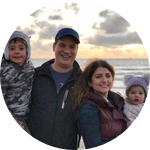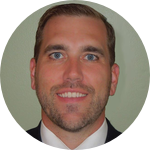About This Project
Some babies are born with tongue-tie where an unusually short or tight band of tissue tethers the bottom of the tongue to the floor of the mouth. Babies with tongue-tie can have a hard time breastfeeding. We hypothesize that with a lingual frenotomy, a surgical procedure where the surgeon releases the tether, patients demonstrate improved upward mobility of the tongue and improved sucking mechanics. We will test this using an FDA-approved bottle that measures suck quality.
Ask the Scientists
Join The DiscussionWhat is the context of this research?
Tongue tie is an accepted cause of breastfeeding problems in infants. We have previously published studies demonstrating the importance of tongue tie release for improving breastfeeding outcomes. Other studies have demonstrated ultrasound visualization of tongue movement before and after lingual frenotomy. However, there are still large gaps in the understanding of the factors influencing lingual frenotomy success. While studies demonstrate improvement in breastfeeding outcomes, there are no studies demonstrating the improvement in bottle feeding outcomes when tongue tie is released.
Recently, an FDA approved bottle feeding system (NFANT labs) has been used to measure sucking mechanics in bottle fed babies, allowing for measurement of sucking pathology.
What is the significance of this project?
Conservative estimates show that approximately 5% of all infants have anterior tongue tie. Deeper, more visibly subtle cases of ankyloglossia have not been included in these incidence numbers, so the percentage of children with ankyloglossia is much higher than previously thought. Our research demonstrates that posterior tongue tie can be as problematic as anterior ties.
An available FDA-approved feeding solution allows for the measurement of infant sucking motions. This allows for detection of changes following surgical intervention. Previous ultrasound studies by Geddes show the importance of the upward movement of the tongue, but further lingual movement parameters following frenotomy have not been reported.
What are the goals of the project?
Our hypothesis is that lingual frenotomy for tongue-tied children will result in objectively measured improvement in mid-tongue elevation towards the palate.
The primary goal of this project is to record changes in sucking parameters following lingual frenotomy using the NFANT bottle feeding system. We plan to compare improvements over time between a control, non-intervention group and a frenotomy group. Secondary goals include recording validated outcomes of reflux and feeding efficiency.
The ultimate aim would be to publish this research. It would represent the first study demonstrating the improvement in frenotomy outcomes in bottle-fed babies. More importantly, it would provide the first objective evidence that lingual frenotomy changes upward movement parameters of the tongue.
Budget
The majority of the budget goes towards the materials actually used to perform this study. Bottles from the NFANT company (www.nfant.com) are designated for one patient - data are collected locally to a tablet during feeding sessions and analyzed remotely. Each bottle costs $299. Our preliminary power analysis indicates the need to recruit 50 babies. A small portion of the study goes towards the disposable bottle supplies needed to perform the experiment.
The remaining two budget items are for payment of statistical analysis by a biostatistician (approximately 20 hours of work - this is based on the amount of statistical analysis we needed from our previous two studies) and a research assistant needed for organization of the study, data collection and data entry. Previous research assistants were medical students, and based on our previous studies, approximately 40 hours of work is anticipated.
Endorsed by
 Project Timeline
Project Timeline
We anticipate that it will take 2 months to plan for the study. Between April-May 2019, we would acquire bottles from NFANT, set up a database and hire and train a research assistant and develop the necessary forms for data acquisition during the study.
From June-August 2019, we would enroll subjects for the study, and then in August-September 2019 we would analyze the data and prepare a manuscript.
Once published, findings would be shared online at drghaheri.com and experiment.com
Feb 20, 2019
Project Launched
Apr 01, 2019
Hire research assistant
Jun 03, 2019
Begin patient accrual
Aug 05, 2019
End patient accrual
Sep 30, 2019
Submit manuscript with results
Meet the Team
Bobak Ghaheri
I am originally from the great land of southwestern Ohio. I did my undergraduate training in Spanish and Anthropology at The Ohio State University, and remained there for medical school. In 2002, my wonderful wife and I relocated to Portland, Oregon, where I did my residency training in otolaryngology/head and neck surgery at Oregon Health Sciences University. In 2007, I joined The Oregon Clinic, the largest multispecialty clinic in Oregon.
My clinical interest is helping babies with feeding difficulties. This desire stems from my personal experiences, where both of my daughters had significant problems breastfeeding. I was the first ENT in the United States to use an in-office laser treatment for assisting babies to latch on to the breast, in addition to treating older children and adults for certain dental and speech issues.
Project Backers
- 148Backers
- 132%Funded
- $25,977Total Donations
- $175.52Average Donation









